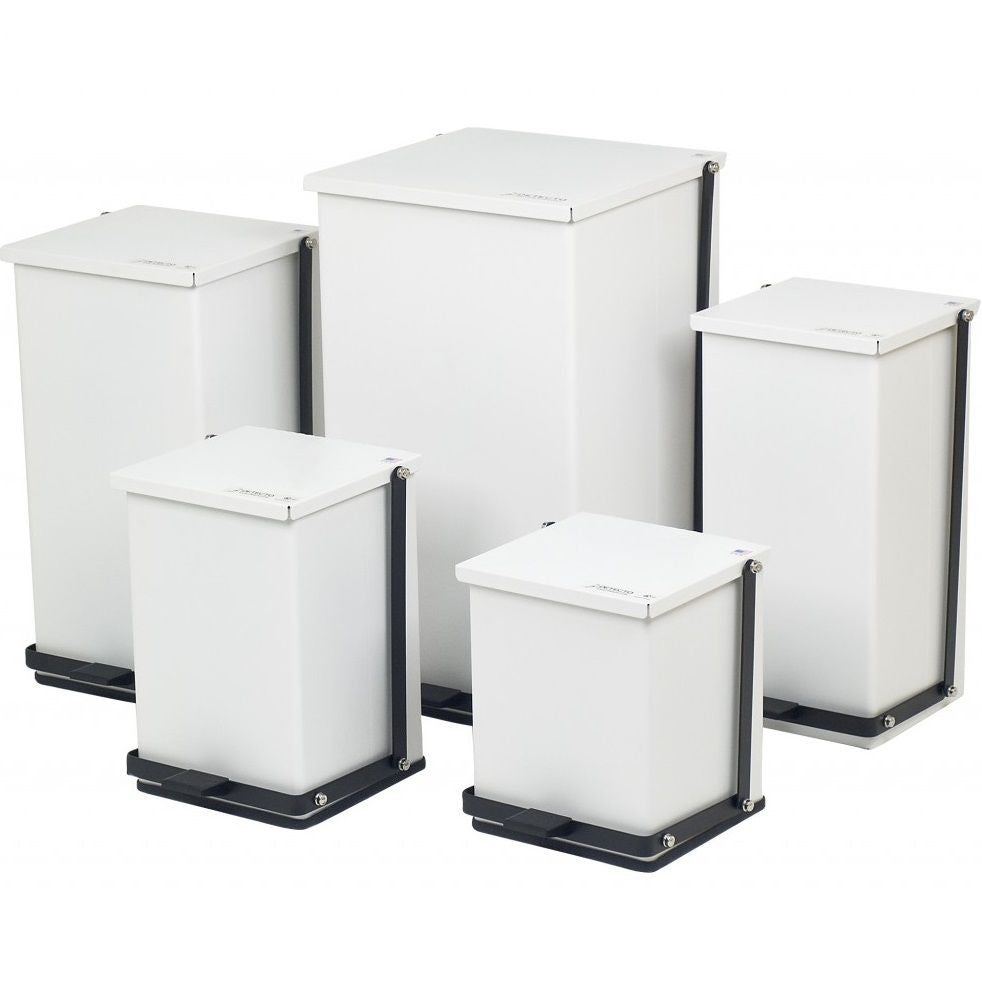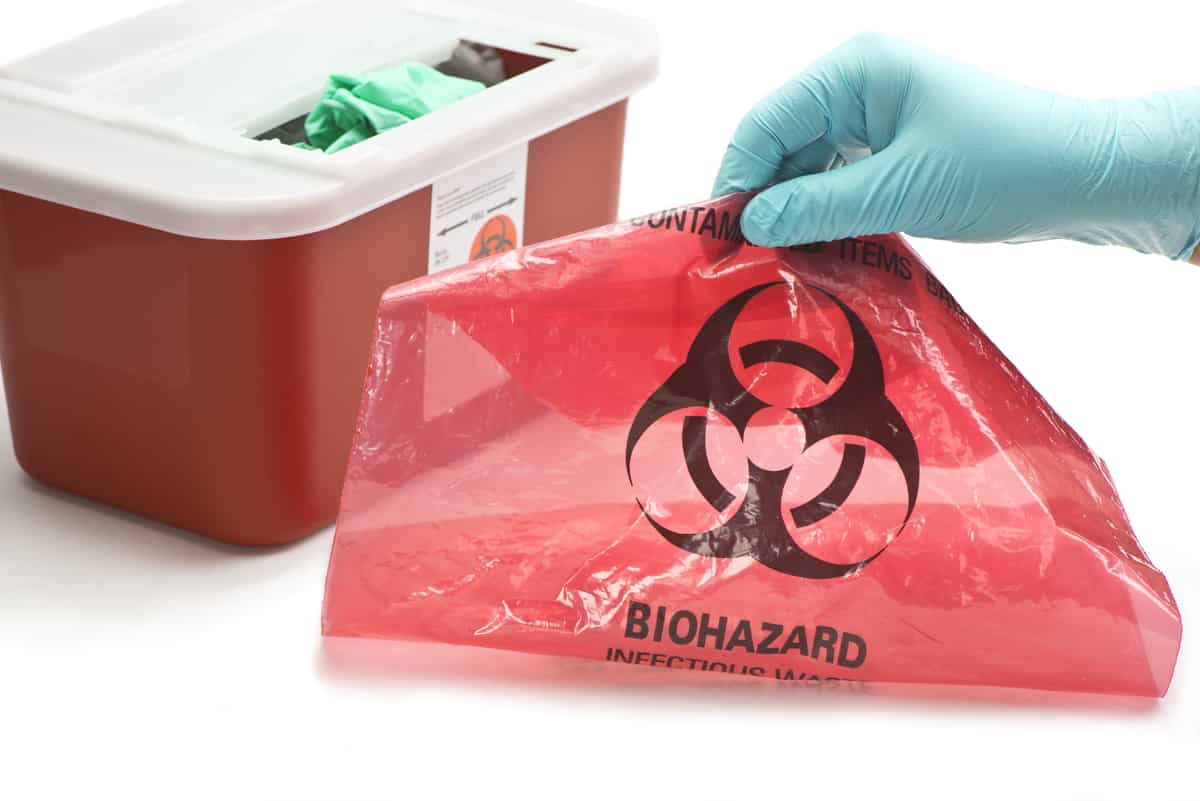Beyond Cleanup: Ensuring Safety with Specialist Medical Waste Removal
Wiki Article
The Importance of Correct Medical Garbage Disposal: An Overview for Health Care Facilities
Proper medical waste disposal is an essential aspect of medical care facility administration, making certain the safety and security and well-being of clients, personnel, and the setting. From recognizing the various groups of clinical waste to abiding with governing needs, health care centers have to take on reliable waste partition techniques and pick ideal disposal approaches.Recognizing Clinical Waste Categories
Recognizing clinical waste classifications is vital for proper disposal in medical care centers. Medical waste is a wide term that incorporates different kinds of waste generated in medical care settings, such as research laboratories, facilities, and medical facilities. Categorizing clinical waste assists guarantee that it is handled, saved, and disposed of safely and according to relevant guidelines.There are several groups of medical waste that medical care facilities require to be conscious of. These categories include transmittable waste, sharps waste, pharmaceutical waste, chemical waste, and contaminated waste (medical waste disposal services with WasteX). Each classification has details features and calls for different disposal approaches to minimize the danger of injury to healthcare employees, clients, and the atmosphere
Infectious waste, for example, refers to waste polluted with potentially infectious materials, such as blood, body fluids, and cells. Drug waste consists of ended or unused drugs, while chemical waste consists of dangerous chemicals used in clinical procedures.
Compliance With Regulatory Requirements
Medical care centers have to guarantee compliance with regulative needs for correct medical waste disposal. Governing bodies, such as the Environmental Protection Company (EPA) and the Occupational Safety and Wellness Management (OSHA), have developed regulations and standards to guard public wellness and the setting. These regulations lay out the appropriate handling, storage, transport, and disposal of clinical waste.Conformity with regulatory requirements is essential for healthcare facilities to stay clear of legal penalties, reputational damages, and possible harm to human health and wellness and the setting. Failure to conform with these policies can lead to penalties, lawsuits, and even the suspension or revocation of operating licenses.
To guarantee compliance, healthcare centers should develop detailed waste management programs that consist of personnel training, correct waste segregation, and using proper containers and labels. Routine audits and assessments ought to likewise be carried out to recognize any non-compliance issues and address them immediately.
It is vital for medical care facilities to keep up to date with changes in laws and update their waste management techniques appropriately. This can be achieved by actively checking updates from governing bodies and joining training programs and workshops.
Implementing Reliable Waste Partition Practices
To guarantee correct clinical garbage disposal, medical care centers must implement effective waste segregation practices. Waste segregation is a vital action in the general waste administration process, as it helps reduce the risk of infection, avoids cross-contamination, and guarantees the safe disposal of different kinds of waste. Reliable waste partition methods involve dividing clinical waste right into various classifications based on its qualities and potential hazards.One usual technique is the segregation of sharps waste, such as scalpels and needles, from other types of clinical waste. Sharps waste need to be put in puncture-resistant containers to prevent injuries and possible infections. Additionally, harmful waste, such as chemicals and drugs, should be divided from basic medical waste to avoid ecological contamination.
Appropriate labeling and color-coding of waste containers are vital for efficient waste partition. Noticeable and clear tags should be positioned on each container to indicate the sort of waste it includes and any special delivery demands - medical waste disposal services with WasteX. Furthermore, color-coding can be used medical waste disposal services with WasteX to separate in between various waste categories, making it much easier for medical care staff to get rid of and recognize of waste correctly
Routine training and education for medical care team is essential for the successful application of waste partition techniques. Personnel ought to be informed on the different waste classifications, correct partition strategies, and the importance of following waste administration procedures. This will certainly help make sure conformity and consistency in waste segregation practices throughout the center.
Choosing Appropriate Disposal Techniques
Proper choice of appropriate disposal approaches is necessary in making sure the secure and environmentally accountable monitoring of medical waste in healthcare facilities. Healthcare centers create a selection of clinical waste, including sharps, infectious waste, pharmaceutical waste, and chemical waste - medical waste removal service. Each kind of waste requires specific disposal approaches to lessen the danger of contamination, injury, and environmental harmOne common disposal approach for medical waste is incineration. Incineration involves the regulated burning of waste at high temperatures.

Chemical disinfection is an additional method made use of for sure sorts of medical waste, such as pharmaceutical waste. This technique makes use of chemicals to neutralize or ruin contaminants. It is important to pick chemicals that are risk-free and eco pleasant.
Sometimes, landfill disposal might be suitable for non-hazardous clinical waste (medical waste disposal services with WasteX). Nevertheless, correct partition and packaging are critical to avoid leak or contamination.
Eventually, medical care facilities need to meticulously examine the characteristics of their medical waste and pick proper disposal techniques that focus on safety, environmental management, and governing conformity. Routine training and monitoring are vital to ensure that medical care team complies with proper disposal methods.

Training and Educating Staff on Proper Disposal Treatments
Staff education and learning and training play an important function medical waste disposal services with WasteX in guaranteeing the proper disposal of clinical waste in medical care facilities. It is crucial that all team member, consisting of medical professionals, nurses, specialists, and assistance team, obtain extensive training on appropriate disposal procedures. This training must cover the different kinds of medical waste, their possible dangers, and the proper techniques for taking care of, segregating, and throwing away them.Among the key goals of staff education and training is to make sure that all health care professionals recognize the relevance of appropriate disposal treatments and the potential repercussions of inappropriate waste management. They require to be familiar with the threats associated with medical waste, such as the transmission of infections and the contamination of the environment. medical waste removal services. By recognizing these risks, staff participants will certainly be extra motivated to adhere to appropriate disposal procedures and take the needed preventative measures to safeguard themselves, their coworkers, and the area
Educating need to additionally cover the use of personal protective equipment (PPE) and the appropriate techniques for dealing with medical waste. Staff members ought to be educated on how to identify and set apart various sorts of waste, such as sharps, contagious waste, and harmful chemicals. They should likewise be trained on the proper use waste containers, such as sharps containers and biohazard bags, in addition to the value of labeling and sealing these containers properly.
In addition, staff education and learning and training need to consist of normal updates and refresher course programs to guarantee that healthcare experts remain educated regarding the current laws and finest practices in clinical garbage disposal. This recurring education and learning is critical to preserve a high level of awareness and compliance amongst team member.
Conclusion
In verdict, proper clinical waste disposal is of utmost importance for medical care centers. Comprehending the different categories of medical waste and conforming with regulatory needs guarantees the security and try this health of both medical care workers and the basic public.From recognizing the various categories of clinical waste to conforming with regulative requirements, medical care centers need to embrace efficient waste segregation techniques and pick ideal disposal methods. These categories consist of infectious waste, sharps waste, pharmaceutical waste, chemical waste, and contaminated waste.To guarantee proper clinical waste disposal, healthcare facilities must carry out reliable waste segregation practices. Waste segregation is a crucial action in the general waste monitoring process, as it aids decrease the risk of infection, prevents cross-contamination, and guarantees the risk-free disposal of different types of waste. Medical care facilities produce a range of clinical waste, consisting of sharps, contagious waste, pharmaceutical waste, and chemical waste.
Report this wiki page